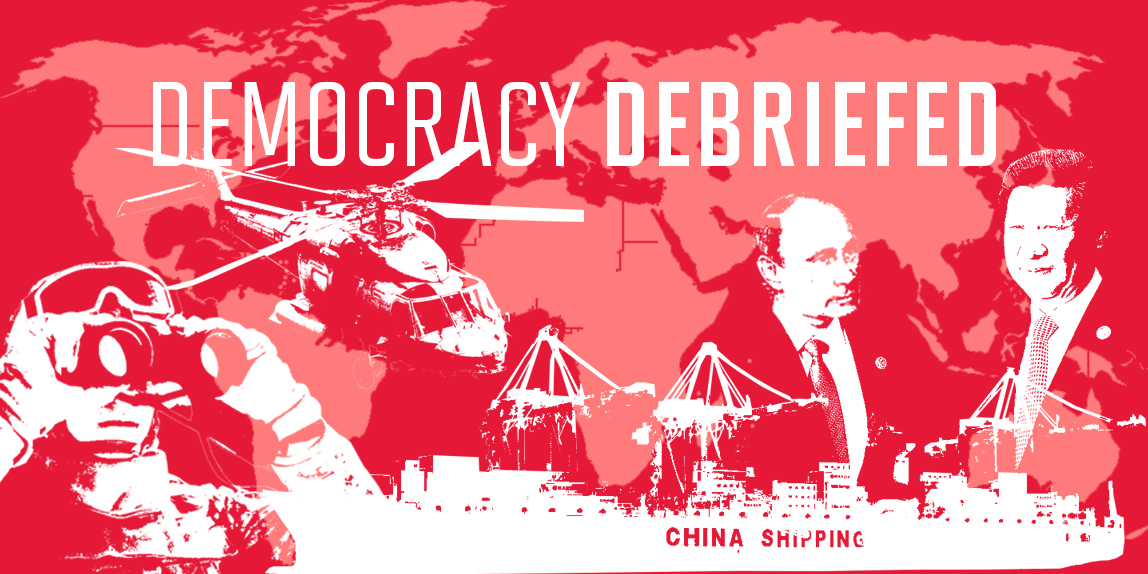Democracy Debriefed is a weekly interpretive column that explains complex foreign and domestic policy issues. The views expressed are the author’s own.
As far as Afghan districts go, Sangin is rather important. Its district center sits along the Helmand River, where the Musa Qala tributary branches north to irrigate farmland, and west of the Kandahar provincial border. From there, it’s a perfect position to launch attacks against the provincial capital of Lashkar Gah. Sangin’s poppy fields have long been a focal point of Afghanistan’s opium trade and intense combat between NATO forces and the Taliban. This year has proven no different. In March 2017, Sangin fell to Taliban forces after a yearlong offensive in the district. For the Afghan government, the loss is just one in a series of defeats that have conceded nearly 35 percent of the country to Taliban authority.
In President Obama’s final days in office, he authorized $4.26 billion for sustaining Afghan National Defense and Security Forces in Fiscal Year 2017. More importantly, he recommended that the incoming Trump administration do the same through 2020. A stark departure from Mr. Obama’s campaign trail promise to end the war within his first term, it seems the reality of Afghanistan is hard to escape. For President Trump, that reality has been reiterated with the fall of Sangin. Afghanistan’s dilemma seems to mirror the Kobayashi Maru, a no-win scenario in Star Trek films that requires a starship commander to think innovatively and commit to a decision. Similarly, there is no straightforward way to attack the Taliban insurgency, but there are ways for the United States to commit to the scenario more efficiently.
For one thing, artificial timelines should not be placed on a drawdown of troops. To many, this was Obama’s strategy’s fatal flaw. Not only did it broadcast an end date for the Taliban to plan offensives around, but it also decreased their incentive to work toward a political settlement with the national government. Why would the Taliban negotiate to be a minority political party when they could instead continue chipping away at that national government until it collapses, occupying the power vacuum left behind? Additionally, the timeline was born out of political expediency, not strategy. The drawdown was a part of the president’s campaign promises and reflected a waning domestic interest in the conflict. Instead, the incoming administration should base a U.S. departure from Afghanistan on one simple question: Has the Taliban committed to a political compromise with the national government? Unfortunately, that will only come after the Taliban is sufficiently pressured. In order to do that, the Taliban and other insurgency groups must be denied safe-havens in neighboring Pakistan.
Since the fall of the Taliban in December 2001, Pakistan’s frontier and tribal administrative regions along its shared border with Afghanistan have served as a launching pad for insurgents. The Pakistani government has had considerable trouble in turning these regions into regularly administered provinces due to tribal conflict and Islamist groups. The Haqqani network, ideologically similar to the Taliban and aligned with them in pushing foreigners from Afghanistan, has been largely left alone in this region. The Pakistani government in Islamabad fears cracking down will reorient terror cells internally. Critics of Pakistan’s role note that the majority of the Haqqani network’s financial and real estate holdings are in Pakistan, and the government could easily conduct arrests and asset seizures that would cripple the organization. Motivating Pakistan to take action could take a variety of forms, from forcing Afghanistan to end border disputes with Pakistan over the Durand Line, to cutting off the $1 billion in U.S. aid Pakistan receives per year if they don’t commit to a course of action. These options come with their own diplomatic gambles and squabbles, but if the U.S. is seriously committed to consolidating Afghanistan, ending the safe-havens in Pakistan is a necessity.
Finally, Afghanistan must become a more cohesive national entity. There are many parts of the Afghan state that would benefit from this, to include the awkward power-sharing arrangement between President Ashraf Ghani and Chief Executive Abdullah Abdullah after a particularly heated 2014 election. The brunt of the focus, however, should start with the Afghan National Army (ANA). The ANA is composed mostly of northern Afghans, a problem dating back to the U.S. invasion in which strong ties with the Northern Alliance helped topple the Taliban. The problem is that the most disputed districts are in Afghanistan’s south, like Sangin. Here, the local Pashtuns view the ANA to be just as foreign as the Americans. In 2011, there was a push to recruit more southern Pashtuns into the ANA, but it was largely unsuccessful due to fear of retribution by insurgents and possibly sympathy for their cause. This reflects the local nostalgia for the predominantly Pashtun Taliban who better modeled the southern population’s ethnicity and ideology. It conveys the need to eventually coopt moderate elements of the Taliban with a political compromise.
Even if the United States’ mission is successful, it will be a pyrrhic victory. The cost of the war is high. The overall mission remains to deny terrorists a pseudo-state to plan attacks, but as others have noted, that may not be a sensible metric to measure success. After all, the 9/11 attacks were planned from hotels in Hamburg, Germany, not Kabul. Still, staying in Afghanistan may be a moral and strategic necessity given the rise of ISIS from a similarly fractured Iraqi state.
Much like the Kobayashi Maru, the situation may be unbeatable, at least under the dichotomy of win or lose. In Star Trek canon, Captain Kirk beat the test by reprogramming the scenario and effectively changing the win-lose paradigm. Similarly, Afghanistan may require a U.S. leader to redefine what it means to win and what the U.S. can accept as a loss.
Kyle Rempfer is a sophomore government & politics and Russian major. He can be reached at krempfer@terpmail.umd.edu.



